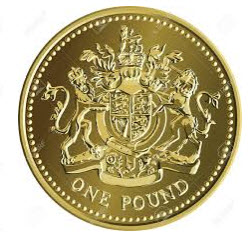Stock markets plummet in the wake of Brexit – investors looking for alternative investments
World markets take a dive after the UK votes to leave the European Union, and investors are scrambling to find alternative ways to invest their money amidst the chaos.
On June 24 2016, the day following the United Kingdom European Union membership referendum, investors lost more than the equivalent of 2 trillion United States dollars. This is the largest single-day lost in recorded world market history, according to S&P Global.
 June 25 and 26 was a Saturday and Sunday, but any hopes of the weekend having a stabilizing impact were scattered when additional selling on Monday extended the losses to a combined 3 trillion dollar equivalent.
June 25 and 26 was a Saturday and Sunday, but any hopes of the weekend having a stabilizing impact were scattered when additional selling on Monday extended the losses to a combined 3 trillion dollar equivalent.
Many investors quickly flocked to traditional safe havens such as governmental bonds and gold, but there are also those who are trying to make a profit from the turbulence, e.g. by short-selling stocks. IG index and other UK brokers have seen an increased interest in binary options, especially among small to mid-scale investors relishing the chance to turn humble investments into major gains by using binary options to essentially bet against the market.
The Pound Sterling
On the morning of 24 June, the GBP dropped like a stone and reached its lowest level against the USD since 1985. Within a two-hour period, the GBP fell from 1.50 USD to 1.37 USD, which is the largest two-hour move for the sterling ever against the USD. The GBP also lost 7% against the Euro.
While stock markets recouped pretty quickly after the shock of the referendum, the sterling remained low and by 8 July is had become the worst performing currency of the year against over 30 other major currencies. It did for instance perform worse than the much maligned Argentine peso.
The London Stock Exchange
 When the London Stock Exchange (LSE) opened on 24 June, the FTSE 100 dropped from 6338.10 to 5806.13 in the first ten minutes of trading. After a further 1,5 hours it had gone up to 6091.27 and by the end of the day it was at 6162.97. When the LSE opened again on Monday 27 June, the FTSE dropped again, losing more than 2 percent by mid-afternoon.
When the London Stock Exchange (LSE) opened on 24 June, the FTSE 100 dropped from 6338.10 to 5806.13 in the first ten minutes of trading. After a further 1,5 hours it had gone up to 6091.27 and by the end of the day it was at 6162.97. When the LSE opened again on Monday 27 June, the FTSE dropped again, losing more than 2 percent by mid-afternoon.
The decline of the FTSE 100 didn’t signal the start of any longer-term trend. By 1 July, the FTSE 100 was up above pre-referendum levels and investors could celebrate as it reached its highest point in ten months. On 11 July, the FTSE 100 had gone up by more than 20% since its February low.
The FTSE 250, which is more focused on the UK than the FTSE 100, declined by approximately 14% between the day before the referendum results were published and near close of trading on Monday 27 June. Just as for the FTSE 100, it was a short-lived drop. The FTSE 250 quickly reached its pre-referendum level again – and then went above it.
Outside the UK
- The Dow Jones Industrial Average fell by nearly 450 points in less than 30 minutes after opening on Friday 24 June. This roughly equalled a 2.5 percent drop.
- After the referendum, the South African Rand (ZAR) fell by over 8 percent against the USD in a single day.
- Globally, we could see investors leaving currencies seen as risky and flocking to purchase USD instead. Countries with economies highly impacted by the UK economy took the largest hits, with Nigeria and Kenya being two notable examples.
- Posted by
 admin
admin - Posted in Uncategorized
 Jun, 25, 2016
Jun, 25, 2016 Comments Off on Stock markets plummet in the wake of Brexit – investors looking for alternative investments
Comments Off on Stock markets plummet in the wake of Brexit – investors looking for alternative investments
Latest news
- MiFID II & Brexit
- Referendum followed by 106% rise in Irish passport applications from Britain in November
- Brexit Britain: Is the economy tanking?
- Brexit Britain: What’s going on?
- No current plans for a British independence day on June 23
- UKIP: James quits; Farage steps back in
- Brexit challenge expected to quickly reach Supreme Court
- Will there be a second Scottish independence poll?
- Stock markets plummet in the wake of Brexit – investors looking for alternative investments
- Young Brits protest EU referendum result

 (Closed)
(Closed)